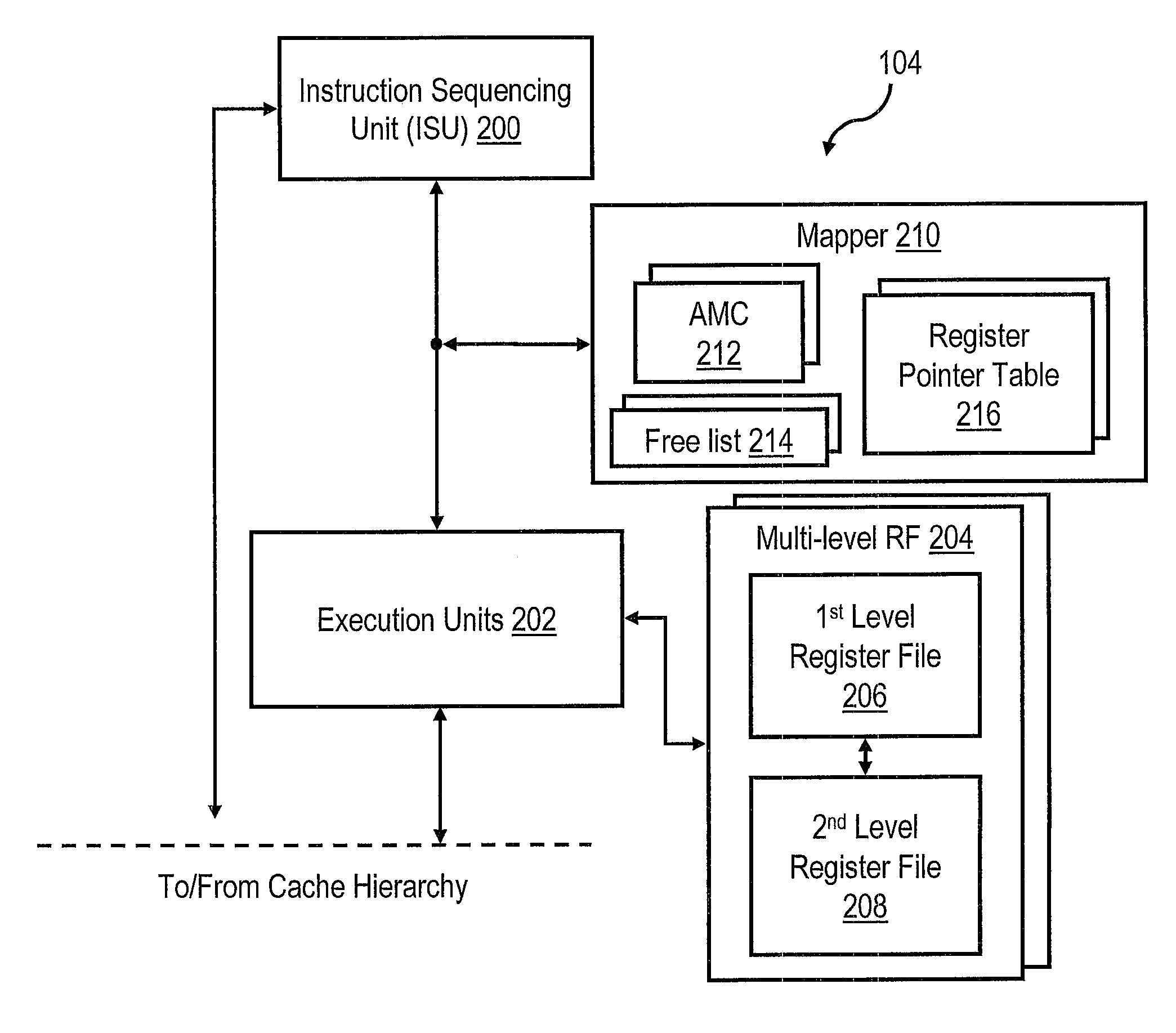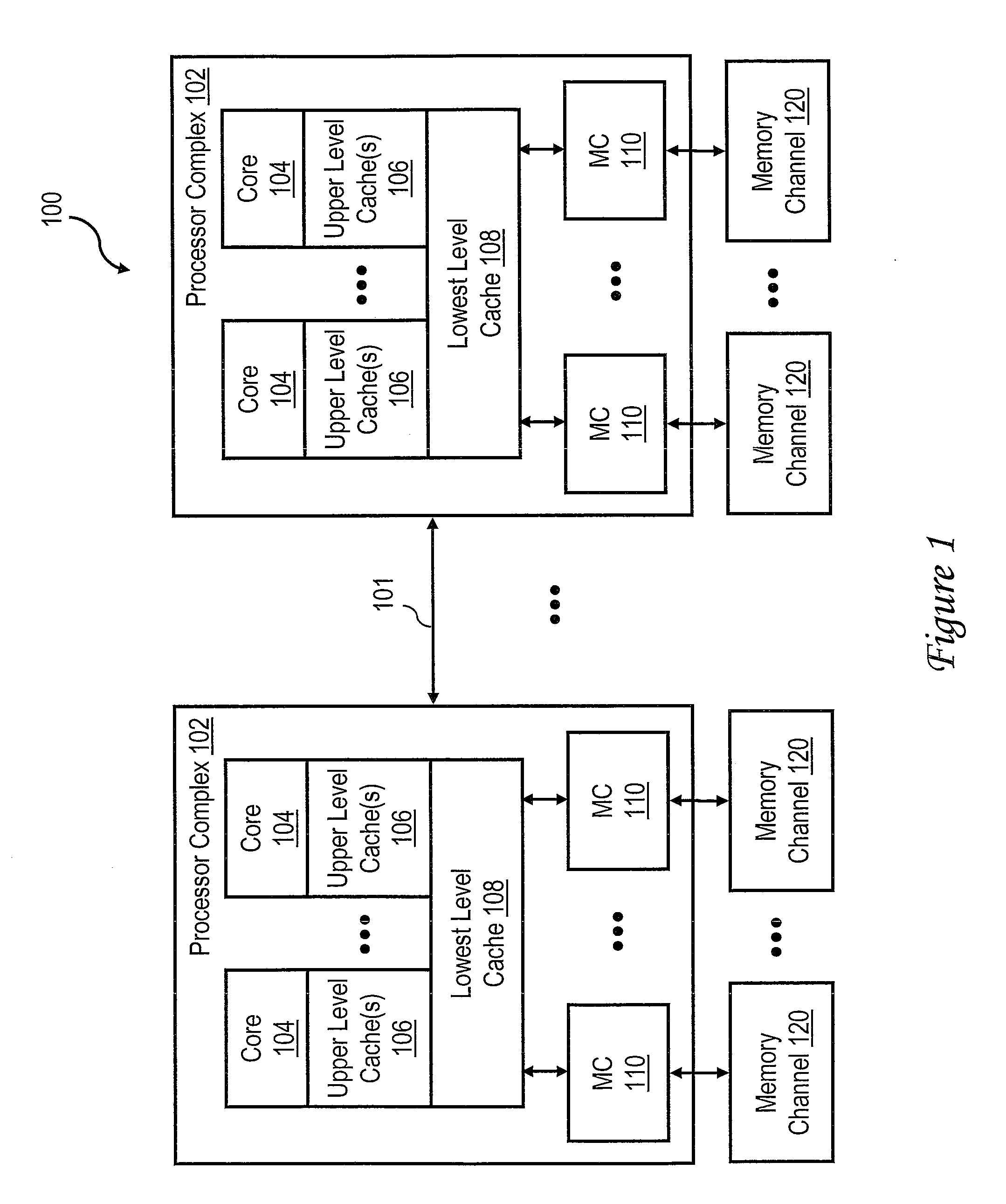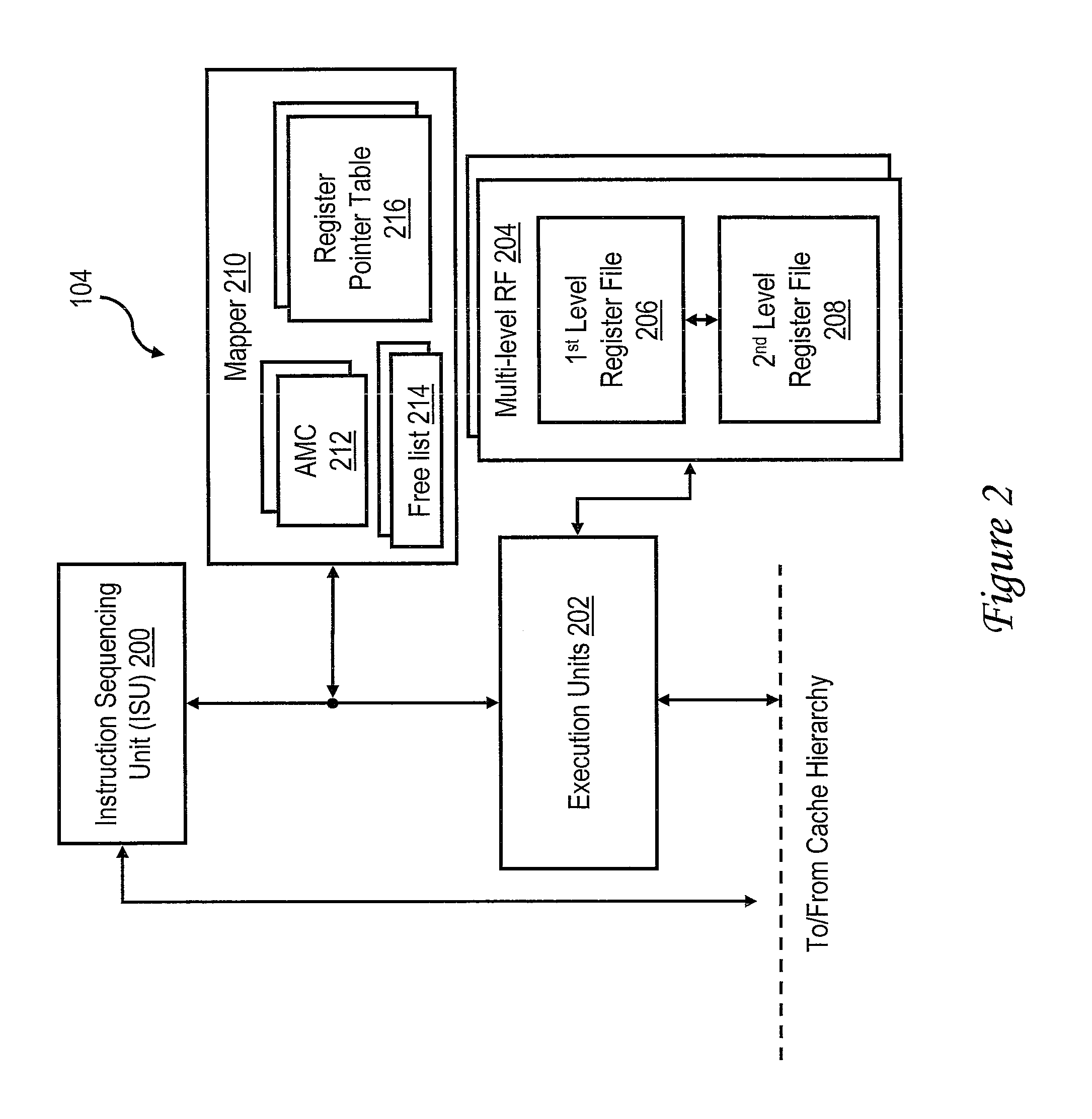Register file supporting transactional processing
a register file and transaction processing technology, applied in the field of data processing, can solve the problems of mutex locks also leading to thread stalls, store-conditional instructions failing, and significant overhead, and achieve the effect of efficient handling of transactional processing, lower access latency, and higher access latency
- Summary
- Abstract
- Description
- Claims
- Application Information
AI Technical Summary
Benefits of technology
Problems solved by technology
Method used
Image
Examples
Embodiment Construction
[0023]With reference now to FIG. 1, there is illustrated a high level block diagram of an exemplary data processing system 100 according to one embodiment. Data processing system 100 includes one or more (and in some embodiments, a multiplicity of) processor complexes 102 coupled for communication by a interconnect fabric 101, which may include, for example, one or more buses and / or switches.
[0024]Processor complexes 102, which may be implemented, for example, as chip multiprocessors (CMPs) or multi-chip module (MCMs), each include at least one processor core 104 for processing data under the direction of program instructions. Each processor core 104 is capable of simultaneously executing multiple independent hardware threads of execution.
[0025]Each processor core 104 is supported by a cache hierarchy including one or more upper level caches 106 and a lowest level cache 108. As will be appreciated by those skilled in the art, the cache hierarchy provides processor cores 104 with low...
PUM
 Login to View More
Login to View More Abstract
Description
Claims
Application Information
 Login to View More
Login to View More - R&D
- Intellectual Property
- Life Sciences
- Materials
- Tech Scout
- Unparalleled Data Quality
- Higher Quality Content
- 60% Fewer Hallucinations
Browse by: Latest US Patents, China's latest patents, Technical Efficacy Thesaurus, Application Domain, Technology Topic, Popular Technical Reports.
© 2025 PatSnap. All rights reserved.Legal|Privacy policy|Modern Slavery Act Transparency Statement|Sitemap|About US| Contact US: help@patsnap.com



